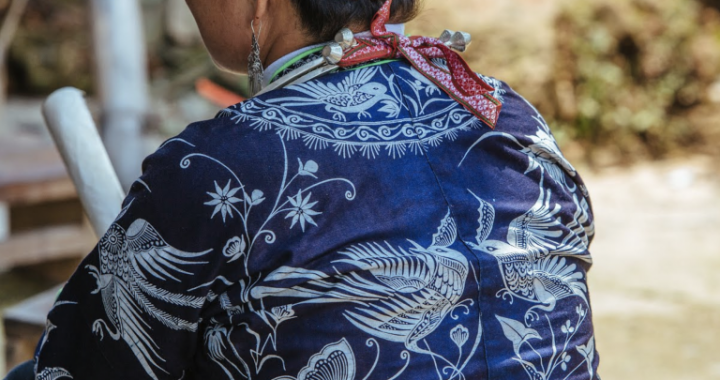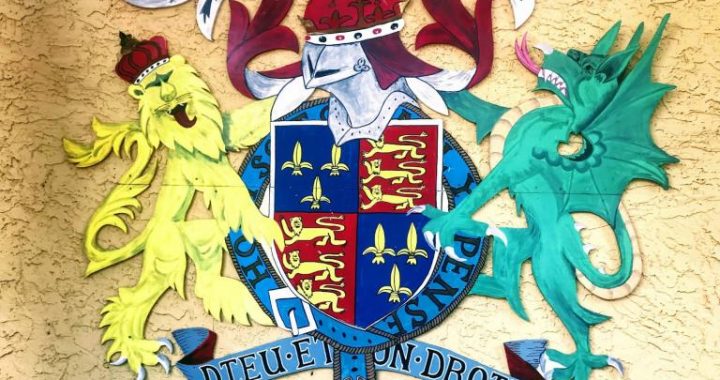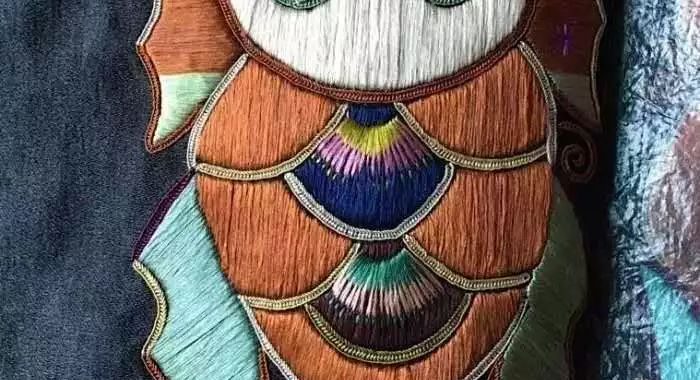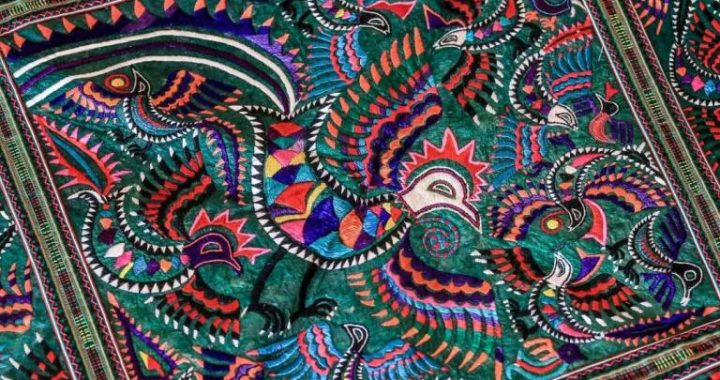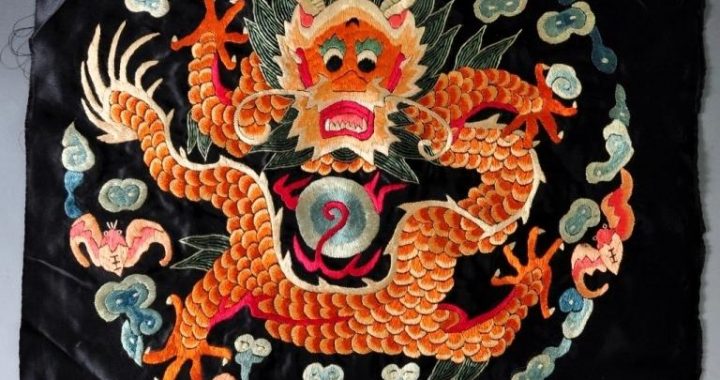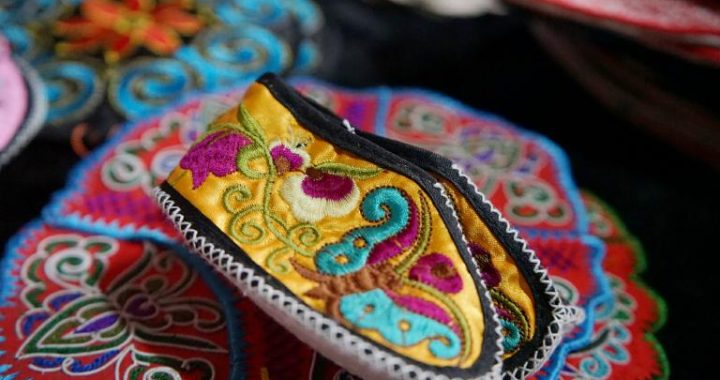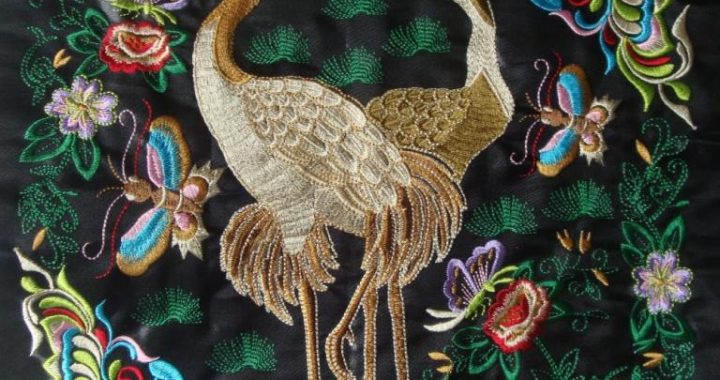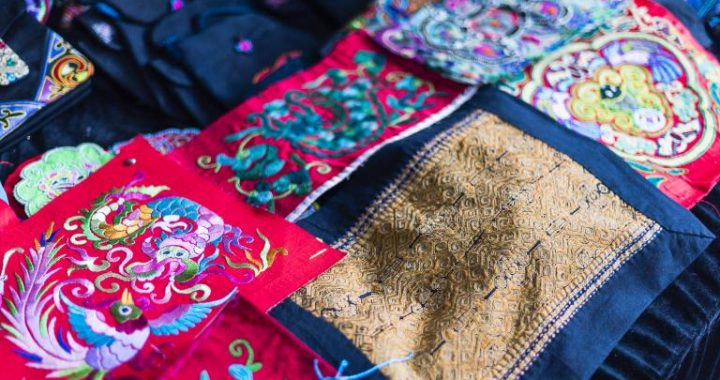Integration of East and West
2 min readSilk patterns of the Sui and Tang period not only took on traditional Chinese styles, but also borrowed many inspirations from decorative art of the west. As a result, many patterns integrating both Chinese and western characters were produced.
among which the “pattern of Duke Lingyang”was one of the most representative.
1) Pattern of Duke Lingyang
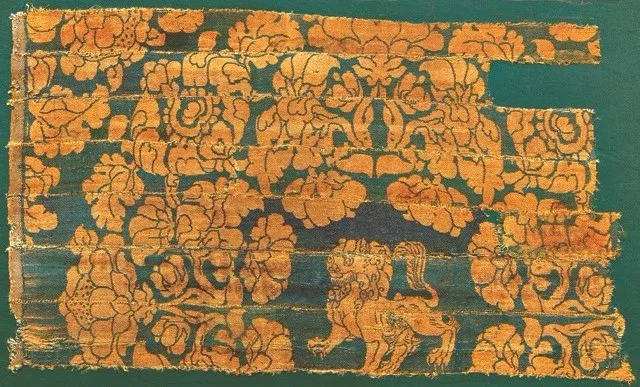
During the reign of Emperor Taizong, there was a famous silk pattern designer named Dou Shilun. After thorough study of western patterns introduced through the Silk Road, he carried out renovations to establish his own distinctive style. Forinstance, he replaced pearl roundels with floral roundels or scroll roundels, and replaced images of western gods with traditional Chinese animal motifs. His creation was warmly welcomed, and became a fashion. As he was knighted as Duke Lingyang these patterns were accordingly named”pattern of Duke Lingyang”.
The roundels applied in the Lingyang Duke pattern consisted of three categories, the first was patterns of mixed roundels, such as double-pearl roundel, pearl roundel with petals or with grass scrolls; the second was the simple grass scroll pattern, which was also named Tang grass pattern, evolving from pattern of curly grapevine; the third applied floral patterns to form the roundel. Meanwhile,a great variety of traditional Chinese motifs were adopted inside the roundel, such as phoenix, mandarin duck, dragon, bird and deer.
A change in arrangement of animal motif inside roundels took place by late Tang dynasty, when a pair of animals would be depicted in a swirling circle. Later, such arrangement was named as the “joyful meeting”style, as they presented a happy atmosphere, and became popular in the Ming and Qing dynasties.
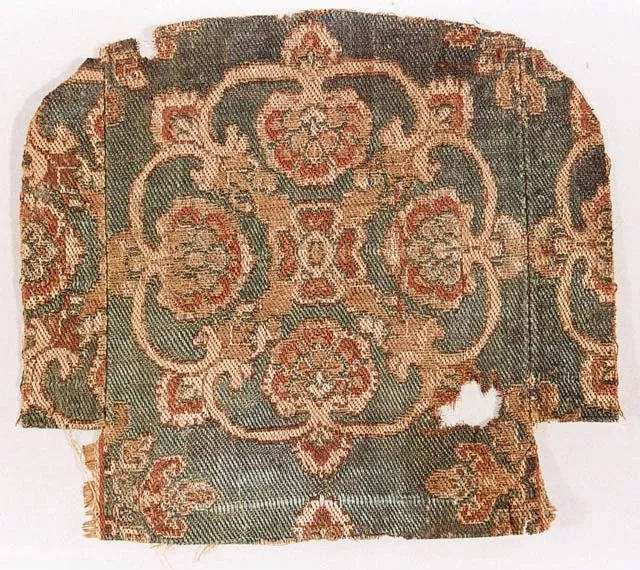
2) Samite with Image of Apollo on Red Ground
The name of a little county Dulan in southeastern Qaidam Basin of Qinghai province became known to people due to excavation of a unique samite there, with image of Apollo in pearl roundels and Chinese characters on red ground, which is a typical manifestation to integration of multi-national cultures during the Tang dynasty. Apollo, the God of Sun in Greek myth, who was believed to rein a four-horse golden cart across the sky, and spread sunshine to earth, was portrayed inside thepearl roundel pattern originated in west Asia. On the textile, Apollo’s chariot is drawn by six winged horses, in which he sits on a lotus throne with his legs crossed, and with a canopy over his coronet. The samite is also weaved with Chinese characters”Ji”(meaning auspice) and “Chang”(meaning prosperity). The co-existenceof Greek god, lotus throne from Indian Buddhism, pearl roundel patterns from West Asia and Chinese characters, reflects the broadness and profundity of cultural integration of the time.
